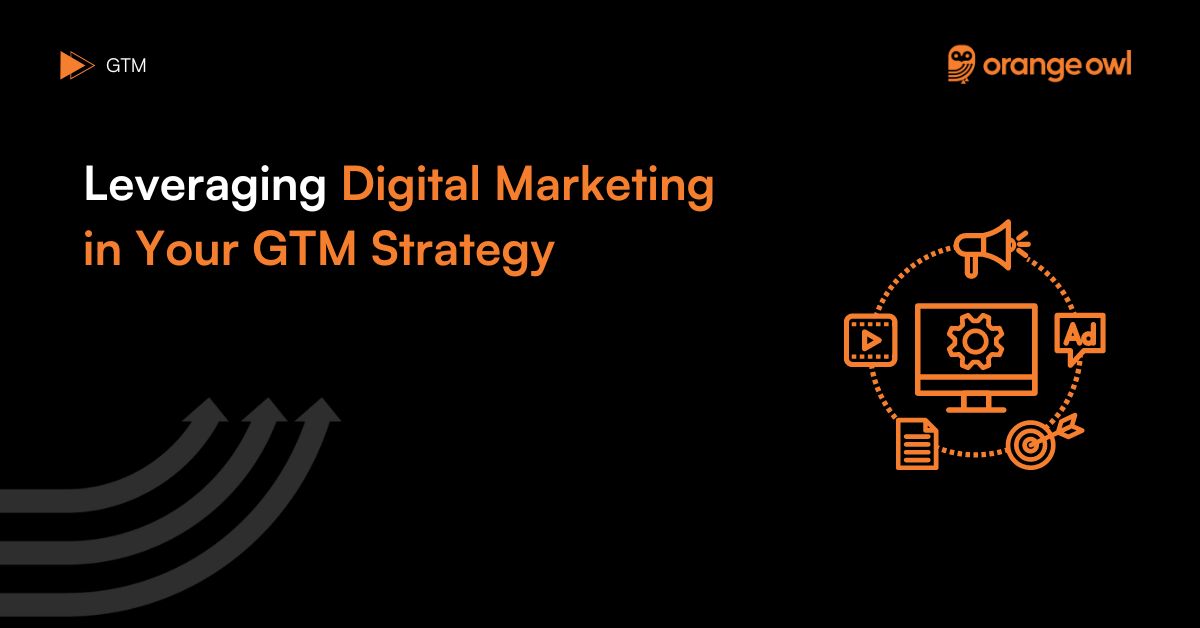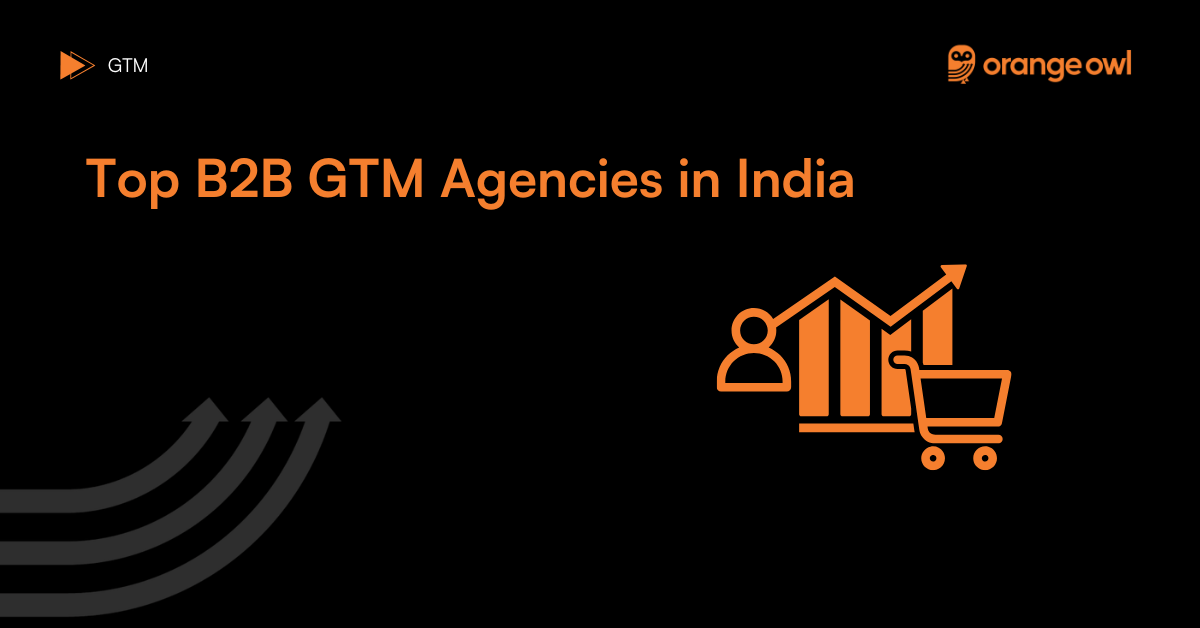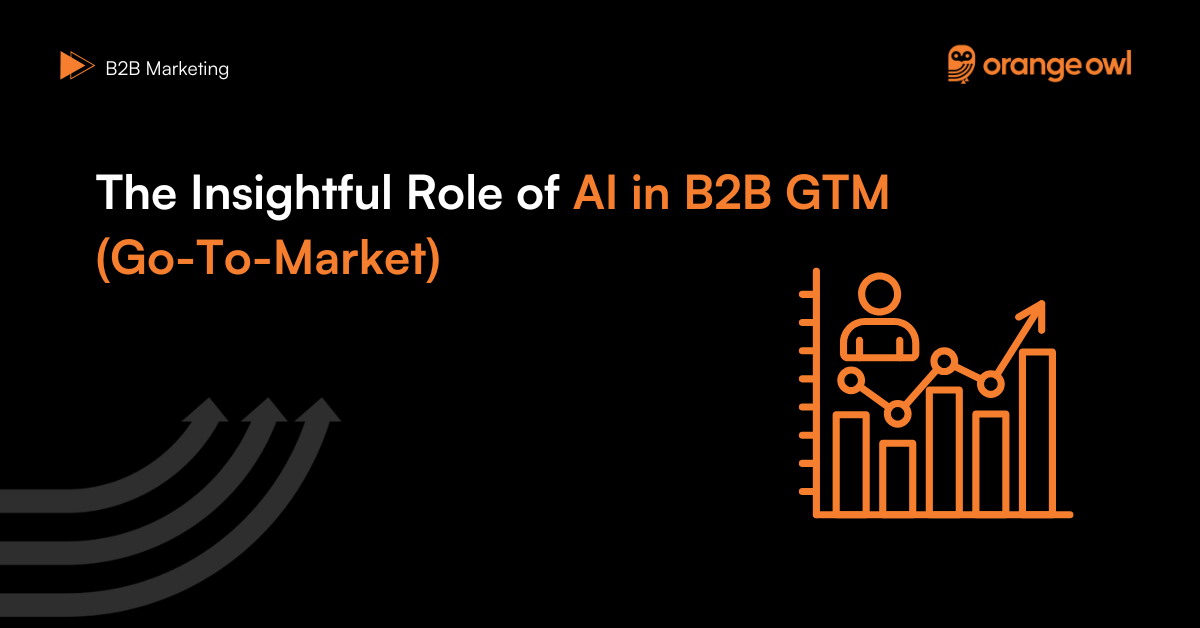Leveraging Digital Marketing in Your GTM Strategy
Vivek Goel
February 1, 2025

Table of Contents
In today’s digital-first world, integrating digital marketing into your Go-To-Market (GTM) strategy is essential for achieving success. From social media to content marketing, digital channels offer unparalleled opportunities to reach and engage your target audience. This blog will explore how to leverage digital marketing to enhance your GTM strategy, driving better results and maximizing your market impact.
Understanding Digital Marketing

Digital marketing involves promoting products or services using digital channels such as search engines, social media, email, and websites. It allows businesses to connect with their audience in a more targeted, measurable, and cost-effective way compared to traditional marketing methods. Here’s how digital marketing aligns with your key components of GTM Strategy:
Enhanced Reach
Digital marketing channels such as social media, search engines, and email enable you to expand your reach beyond geographical boundaries, tapping into global markets. By leveraging these channels, you can connect with a wider audience, ensuring your product or service gains maximum exposure.
Example: A SaaS company can use social media platforms like LinkedIn and Twitter to engage with potential clients across different regions, sharing valuable content and updates that resonate with a global audience.
Targeted Advertising
Utilize advanced targeting options to precisely reach your ideal audience based on demographics, interests, and online behavior. This ensures your marketing efforts are focused and effective, reaching those most likely to convert into customers.
Example: A B2B enterprise software provider can use LinkedIn Ads to target decision-makers in specific industries, ensuring their advertisements reach the right people at the right time.
Data-Driven Insights
Leverage analytics tools to gather valuable insights into customer behavior, preferences, and engagement metrics. These insights allow you to refine your GTM strategy based on real-time data, making informed decisions that enhance your marketing effectiveness.
Example: Using Google Analytics, a company can track website visitor behavior, identify high-performing content, and adjust their marketing strategies accordingly to drive better results.
Content Distribution
Digital marketing platforms provide diverse channels for distributing your content, amplifying your brand message, and establishing thought leadership. Whether through blogs, videos, or social media posts, effective content distribution helps position your brand as an industry leader.
Example: A cybersecurity firm can use content marketing strategies, publishing blog posts, whitepapers, and case studies on their website and sharing them across social media platforms to educate their audience and establish authority.
Lead Generation
Implement lead-generation tactics such as gated content, email campaigns, and webinars to capture and nurture leads. Drive them through the sales funnel with targeted digital touchpoints, ensuring a steady flow of potential customers.
Example: A marketing automation company can offer a free eBook on lead generation strategies in exchange for contact information, nurturing these leads through email campaigns with valuable insights and offers.
Conversion Optimization
Utilize A/B testing, conversion rate optimization (CRO) techniques, and personalized messaging to optimize your digital assets for maximum conversion efficacy. This involves continuously testing different elements of your digital campaigns to identify what drives the best results.
Example: An e-commerce platform might use A/B testing to determine the most effective call-to-action buttons on their landing pages, ensuring higher conversion rates.
Customer Engagement
Foster meaningful interactions with your audience through social media engagement, community building, and personalized communication. Strengthening brand loyalty and advocacy can lead to long-term customer relationships.
Example: A fintech company can engage with its audience on Twitter, responding to queries, sharing user-generated content, and building a community of loyal customers who advocate for their brand.
Agility and Adaptability
Digital marketing offers flexibility and agility, allowing you to quickly adjust strategies, refine messaging, and capitalize on emerging trends and opportunities in real time. This adaptability is crucial in a fast-paced digital world.
Example: A travel tech startup can swiftly adjust its marketing campaigns in response to changing travel trends and consumer behaviors, ensuring its messaging remains relevant and effective.
Key Digital Marketing Tactics for GTM
Search Engine Optimization (SEO)
- Objective: Improve your website’s visibility on search engines like Google.
- Approach: Optimize your website’s content, structure, and technical aspects to rank higher for relevant keywords.
- Example: A B2B software company can create blog content around industry-specific keywords to attract organic traffic from potential customers.
Content Marketing
- Objective: Attract and engage your audience by providing valuable and relevant content.
- Approach: Develop a mix of blog posts, whitepapers, eBooks, case studies, and videos that address the customer pain points and interests of your target audience.
- Example: A cybersecurity firm can publish case studies showcasing how their solutions have helped other businesses mitigate risks.
Social Media Marketing
- Objective: Build brand awareness and foster relationships through social media platforms.
- Approach: Share content, engage with followers, and run targeted ads on platforms like LinkedIn, Twitter, and Facebook.
- Example: A B2B consulting firm can use LinkedIn to share thought leadership articles and engage with industry professionals.
Email Marketing
- Objective: Nurture leads and maintain customer relationships through email communication.
- Approach: Segment your email list and send personalized, relevant content to different audience segments.
- Example: A SaaS provider can send onboarding emails to new users, product updates to current users, and educational content to potential customers.
Pay-Per-Click (PPC) Advertising
- Objective: Drive immediate traffic and leads through paid search and display ads.
- Approach: Create targeted ad campaigns on platforms like Google Ads and Bing Ads, focusing on high-intent keywords and specific audience demographics.
- Example: An enterprise software company can run Google Ads campaigns targeting keywords related to their software solutions to attract high-quality leads.
Influencer Marketing
- Objective: Leverage industry influencers to expand your reach and credibility.
- Approach: Collaborate with influencers who have a significant following within your target market to promote your products or services.
- Example: A tech company can partner with industry bloggers and vloggers to review and endorse their latest product.
Integrating Digital Marketing with Your GTM Strategy
Align Digital Marketing with Business Goals
Ensure that your digital marketing efforts support your overall business objectives and GTM strategy. Set clear goals for each digital marketing tactic, such as increasing website traffic, generating leads, or improving customer engagement.
Develop a Cohesive Content Strategy
Create a content calendar that aligns with your GTM timeline. Ensure that your content addresses each stage of the buyer’s journey, from awareness to decision-making.
Utilize Data and Analytics
Leverage analytics tools to track the performance of your digital marketing campaigns. Use this data to optimize your strategies and make data-driven decisions.
Engage with Your Audience
Actively engage with your audience through social media, email, and other digital channels. Respond to comments, answer questions, and foster a community around your brand.
Continuous Improvement
Continuously test and refine your digital marketing tactics. Conduct A/B testing on ads, email campaigns, and website elements to identify what works best and implement improvements.
By effectively leveraging digital marketing within your GTM strategy, you can create a powerful, cohesive approach to reaching and engaging your target audience. The integration of digital marketing tactics not only enhances your market reach but also provides valuable insights and adaptability in a dynamic marketplace. This holistic approach ensures that your product or service is positioned for maximum impact and success.
Conclusion
Incorporating digital marketing into your GTM strategy is essential for maximizing reach, targeting the right audience, and driving data-informed decisions. By leveraging the power of digital channels, you can enhance your brand’s presence, generate quality leads, optimize conversions, and engage with customers effectively. Remember, an integrated approach that combines digital and traditional marketing tactics often yields the best results, providing a comprehensive strategy that drives success in the competitive market landscape. Embrace the digital transformation and let it propel your GTM strategy to new heights.

Frequently Asked Questions (FAQs) about Digital Marketing in GTM Strategy
Digital marketing involves promoting products or services using digital channels such as search engines, social media, email, and websites. It fits into a GTM strategy by allowing businesses to connect with their audience in a targeted, measurable, and cost-effective way, enhancing reach and engagement.
You can expand your reach by utilizing social media, search engines, and email marketing. These channels help connect with a broader audience beyond geographical boundaries. Platforms like LinkedIn and Twitter are effective for engaging with potential clients across different regions.
Best practices include using advanced targeting options to reach your ideal audience based on demographics, interests, and online behavior. For example, using LinkedIn Ads to target decision-makers in specific industries ensures your advertisements reach the right people at the right time.
Data-driven insights allow you to gather valuable information on customer behavior, preferences, and engagement metrics. Tools like Google Analytics can track website visitor behavior and help you adjust your marketing strategies to drive better results.
Effective methods include using blogs, videos, and social media posts to distribute content. This helps amplify your brand message and establish thought leadership. For instance, a cybersecurity firm can publish blog posts and whitepapers to educate their audience and build authority.
Implement lead-generation tactics such as gated content, email campaigns, and webinars. For example, offering a free eBook in exchange for contact information can help capture leads, which you can nurture through targeted email campaigns.
Key techniques include A/B testing, conversion rate optimization (CRO), and personalized messaging. Continuously testing different elements of your digital campaigns can help identify what drives the best results, leading to higher conversion rates.
Enhance engagement by fostering interactions through social media, community building, and personalized communication. Respond to queries, share user-generated content, and build a community of loyal customers who advocate for your brand.


